Don’t Miss Out : Join our live webinar on AI in Test Automation - Register Now
SQL Server is one of the most helpful database applications that has been used with java based applications on a daily basis for smooth operations. But to use any database against any application, the first and foremost thing to do is install it. So here also, you must install the application on the server and connect with different clients. We will further learn more about the different types of SQL Server installation. Let’s dig in.
There are three SQL Server Installation methods:
Before installing SQL Server, you must log onto that machine with an account belonging to the local administrators' group.You have three types of installation: to choose from. These are minimum, typical, and custom. SQL Server selects the typical installation. If you want to add your installation, add or remove components, etc., you need to perform a custom installation.
The minimum installation option installs the following components:
As part of the Typical installation, the following components are installed:
A Step-by-step Guide to Install SQL Server Developer Edition
Step 1
Install the media file (ISO file) downloaded in the above section by double-clicking on it. It will extract/mount all the contents in a new temporary drive.
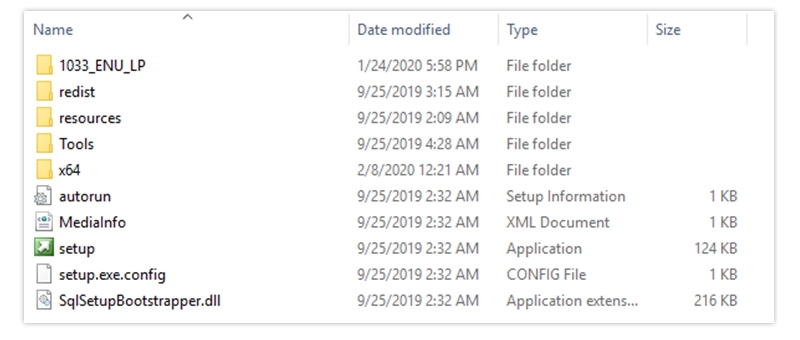
Step 2
Once the extraction is done, double-click on the setup.exe file to see the screen below. Click on the Installation option in the left panel and then click on New SQL Server stand-alone installation or add features to an existing installation option from the right panel.
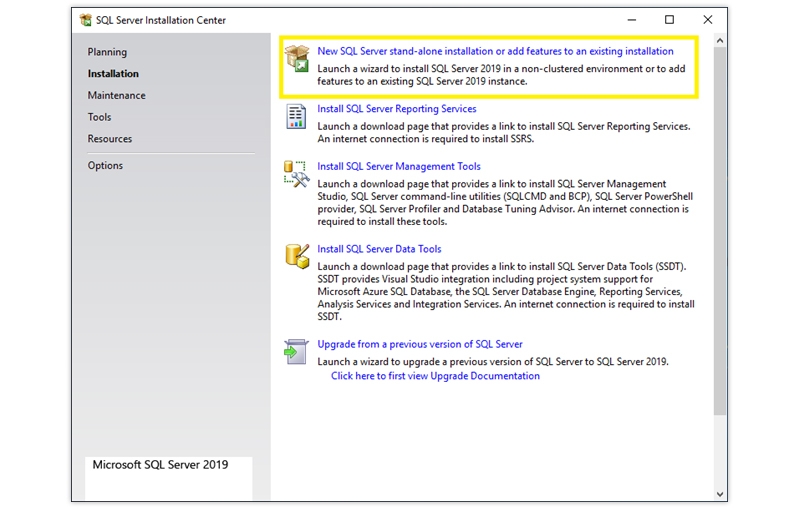
Step 3
Now, you will see the Product Key window. Select the Developer option from the dropdown and click on the Next button.
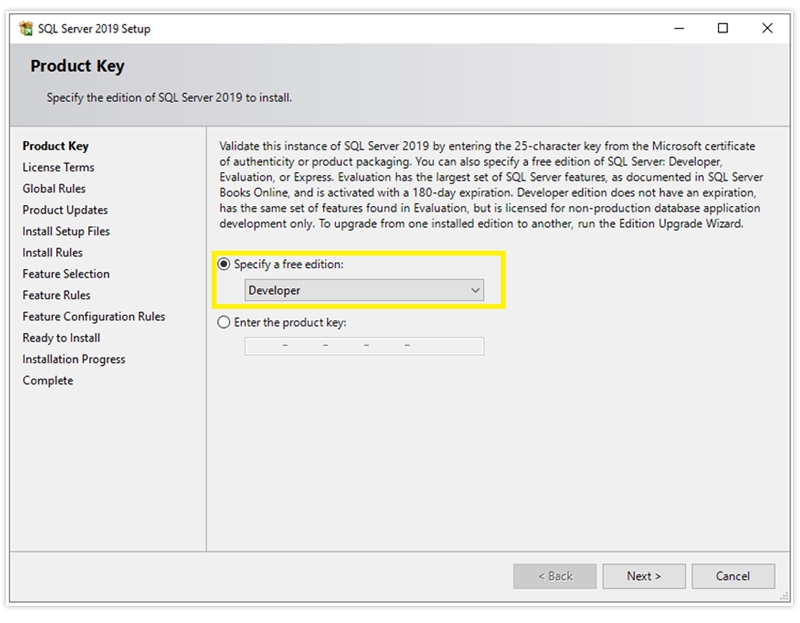
Step 4
Now, you will see the License Terms window. Select the checkbox and click on the Next button.
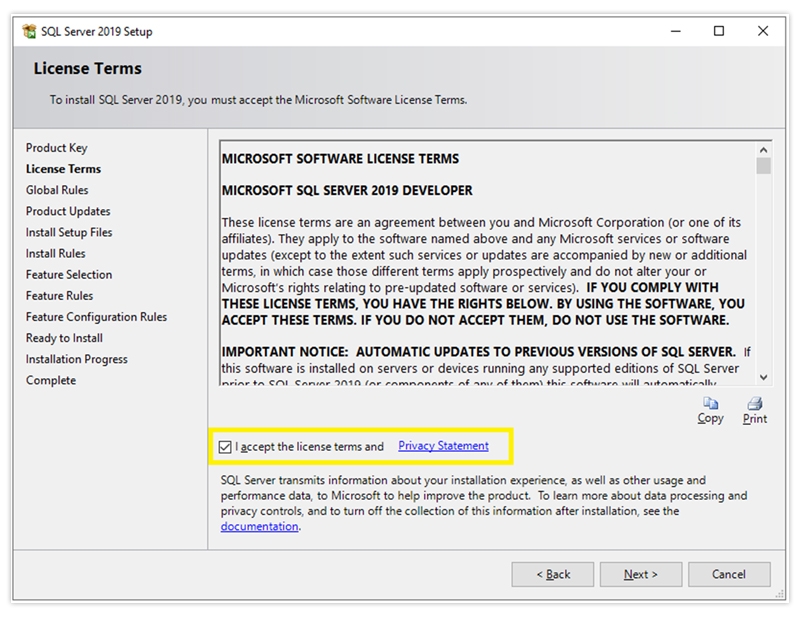
Step 5
Now, you will see the Microsoft Update window. Checking for the latest updates is not compulsory, but it is recommended. So, select the checkbox and click the Next button.

Step 6
Now will check for updates and install them, if any.
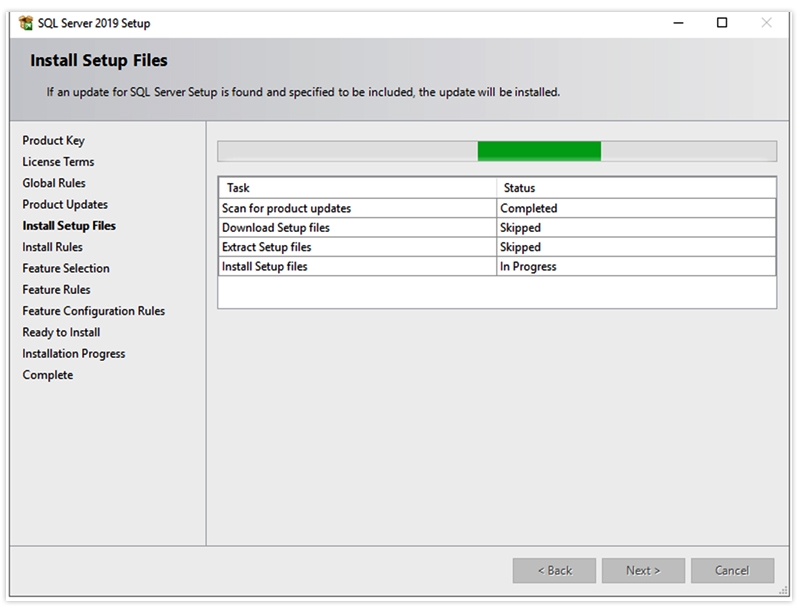
Step 7
After that, it will check some rules or prerequisites for installing SQL Server. Once all rules passed, click on the Next button. You can find some known errors at the end of this article.

Step 8
Select features on the Feature Selection window, as shown in the screenshot below. You can also change the location for SQL Server instance installation, but I will go with the default location. After feature selection, click the Next button.
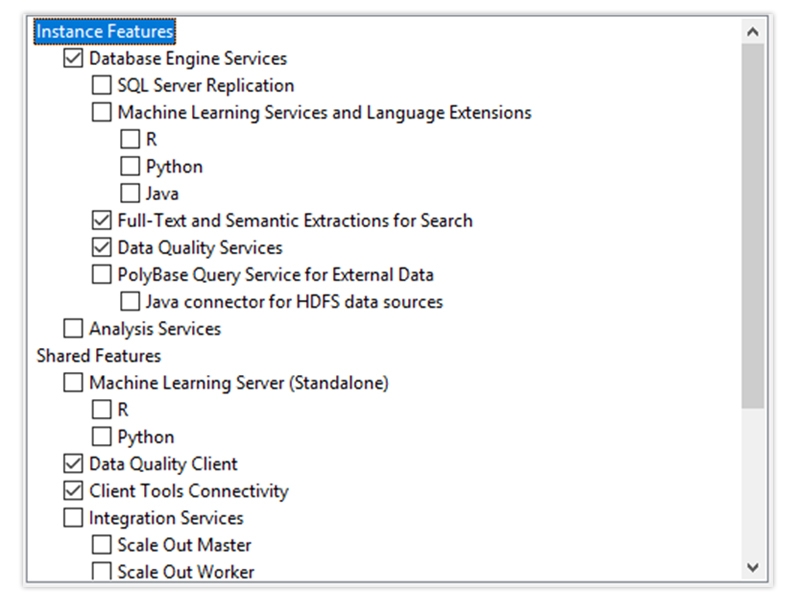
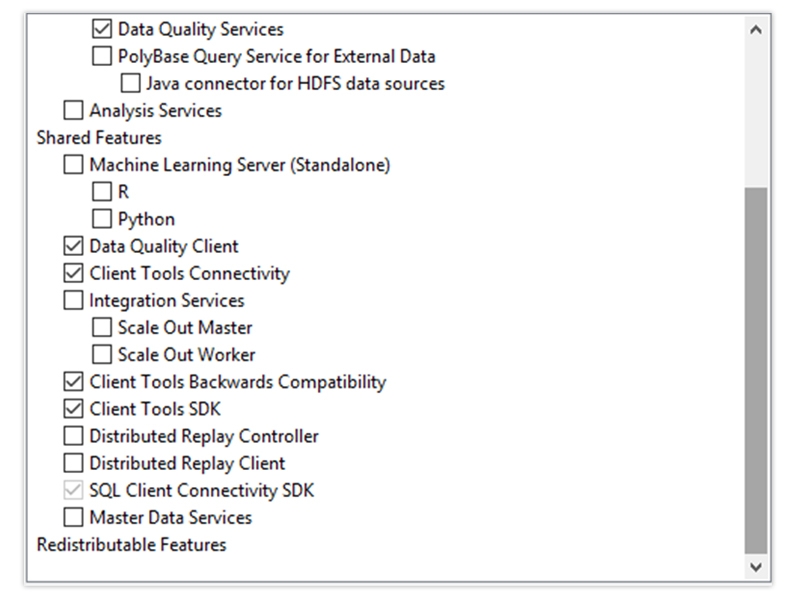
Step 9
It will check some feature rules/prerequisites, and then you will see the Instance Configuration screen. Here you can choose either the Default Instance or the Named Instance. Let’s go with Named Instance for this case.
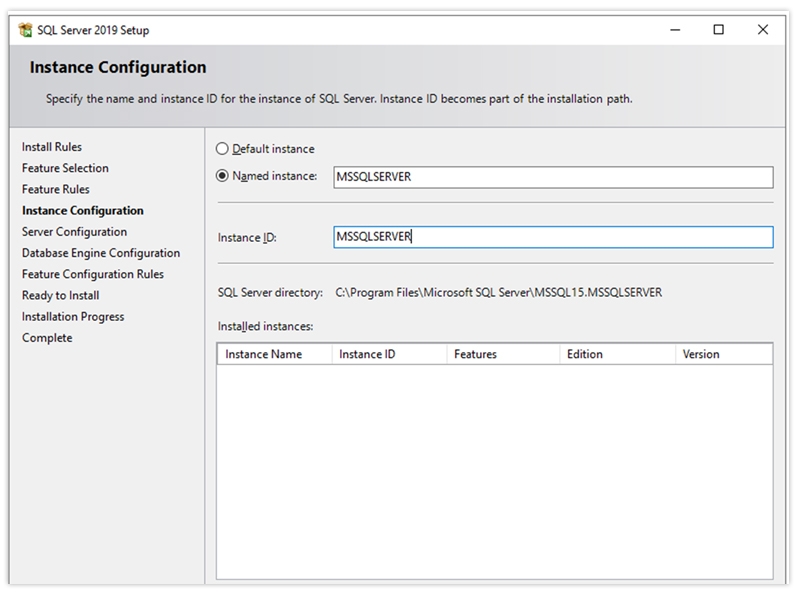
Microsoft defines an unattended installation as “installs several SQL Servers with identical configurations without using the interactive SQL Server setup.” This type of install executes a command file that makes a call to a setup file. The command file can determine the platform of the Server and runs the appropriate version of SQL Server setup; it specifies the setup parameters and calls a setup.ini file that specifies all the options a user may have chosen during an interactive setup.
Steps of the Unattended/ Unmanned Installation Process
To install from a command prompt, first, you have to open an administrative command prompt and navigate to where setup.exe is located within the SQL Server Setup media. Run the setup.exe command, along with the needed and optional variables that accomplish what you're trying to achieve:
C:\SQLMedia\SQLServer2022> setup.exe /[Option] /[Option] = {value}
The following example depicts the installs of SQL Server Database Engine, SQL Server Analysis Services, SQL Server, and Integration Services in quiet mode:
C:\SQLMedia\SQLServer2022> setup.exe /[Option] /[Option] = {value}
The following example depicts the installs of SQL Server Database Engine, SQL Server Analysis Services, SQL Server, and Integration Services in quiet mode:
C:\SQLMedia\SQLServer2022> setup.exe /Q /IACCEPTSQLSERVERLICENSETERMS /ACTION=" install."
/PID="AAAAA-BBBBB-CCCCC-DDDDD-EEEEE" /FEATURES=SQL, AS, IS
/INSTANCENAME=MSSQLSERVER /SQLSVCACCOUNT="MyDomain\MyAccount"
/SQLSVCPASSWORD="************" /SQLSYSADMINACCOUNTS="MyDomain\MyAccount "
/AGTSVCACCOUNT="MyDomain\MyAccount" /AGTSVCPASSWORD="************"
/ASSVCACCOUNT="MyDomain\MyAccount" /ASSVCPASSWORD="************"
/ISSVCACCOUNT="MyDomain\MyAccount" /ISSVCPASSWORD="************"
/ASSYSADMINACCOUNTS="MyDomain\MyAccount"
To view a list of all possible commands within the console, run the executable with the /help flag:
C:\SQLMedia\SQLServer2022> setup.exe /help

The SQL Server installation methods process allows you to install SQL Server on a remote computer.
How a Remote Installation is Performed,
Microsoft describes the remote installation process as follows:
To install SQL Server on a remote computer, a user account must be specified under which SQL Server Setup starts the setup process on the remote computer. This account must have the following attributes:
SQL Server Installation Best Practices
Below are some steps to follow for SQL Server Installation best practices.
It is one of the critical parts that will directly affect the database performance of production servers. Besides provisioning disk space, the person in charge of installing the SQL Server must select how many drives must be utilized, keeping the project’s budget in mind. According to the number of disks available, they must finalize their proper configuration, as mentioned in this tip Hard Drive Configurations for SQL Server.
Default Instance may seem trivial, but it is not, especially for sys-admins with in-depth knowledge of SQL Server. Some applications that run on SQL Server must be on default instance, so only the machine name will be used by the connection to the database. You’ll also witness multiple servers with an already installed version of SQL Server because of a monitoring tool that utilizes SQL Server Express.
The primary problem with installing features is that you won’t use relies on the fact that most of these attributes are services that automatically start and utilizes system resources. When installing on a production server, you must install only the features you will use. There isn’t a just-in-case.
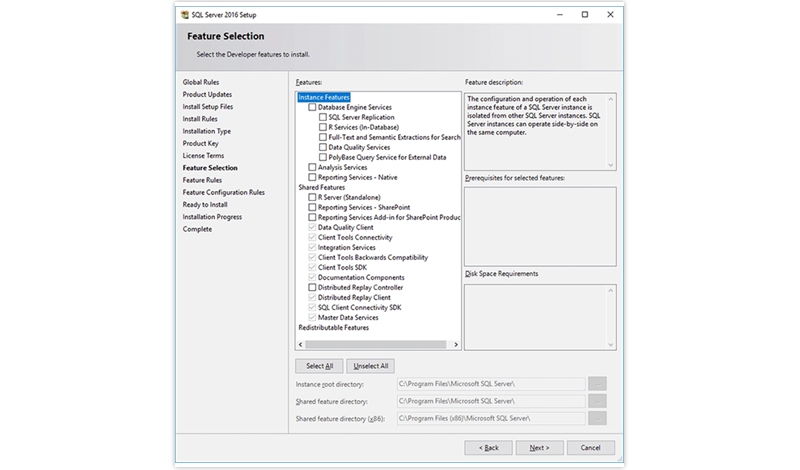
If SQL Server is installed with the default setup, it is installed with the default service accounts. Almost all mid-level companies and big enterprises use Active Directory or a similar method to handle these user accounts. Suppose SQL Server is installed with local service accounts; there is a possibility that SQL Server won’t recognize the domain accounts as a trusted domain account because SQL Server will not be able to verify the SPN in the particular domain.
SQL Server always provides two authentication modes, one Windows authentication mode, with which you can log in to the database instance directly with an authorized Windows login, and the other is Mixed mode, which also includes the possibility to utilize SQL Server logins.
In this particular SQL Server setup, users or groups are asked to be the administrators of the instance, meaning those who will have unrestricted access to it. Someone with zero knowledge of SQL Server security may make the mistake of adding the Administrator group or, even worse, the Domain Administrators group.
One must set up the storage properly before installing SQL Server because data and log files must be treated differently. Using the same drive to store data and log files is the wrong method. So these steps are very essential; even if you made all the previous steps correctly, any mistake here would make them worthless. You might have done an excellent job selecting the right storage and cluster size, but if you go for the default options when asked for the directories to be used by data files, log files, and backups, all that work will be wasted.
Before SQL Server 2016 came into the picture, the installer was only allowed the creation of one data file for TempDB. Now the sky is the limit. There is a Misco, especiallyempDB must have one file per core, but as mentioned in this tip SQL Server tempdb one or multiple data files, there are few difficulties to consider about having one file per core.
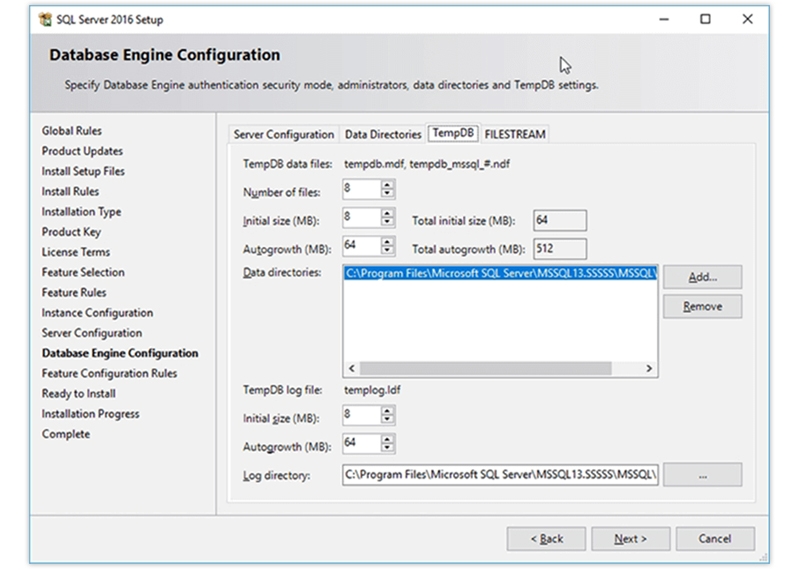
This blog discusses different types of SQL Server installation processes. It also highlights the best practices followed in SQL Server Installation and the usages of different types of SQL Server Installation. You can be the master of SQl server with any online course on sql server training that provides the best coaching for a meaningful understanding.
SQL Training For Administrators & Developers


Database Files-Heart of SQL Server Database

Data Definition Language (DDL) Commands in SQL

What is Schema in SQL With Example: All You Need to Know

Different Types of DBAs and Their Roles

Cyber Security

QA

Salesforce

Business Analyst

MS SQL Server

Data Science

DevOps

Hadoop

Python

Artificial Intelligence

Machine Learning

Tableau
Download Syllabus
Get Complete Course Syllabus
Enroll For Demo Class
It will take less than a minute
Tutorials
Interviews
You must be logged in to post a comment